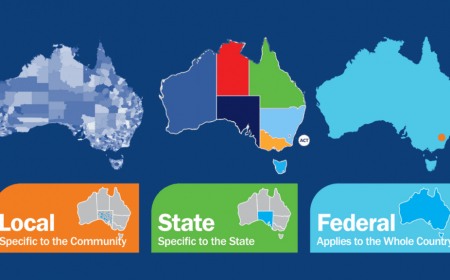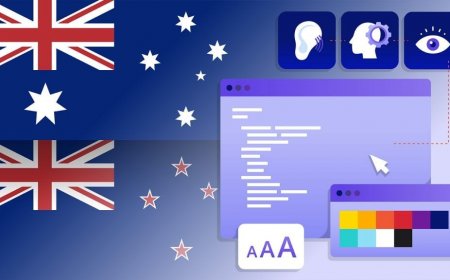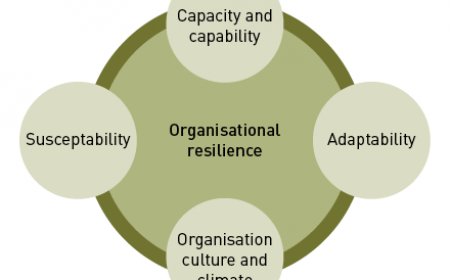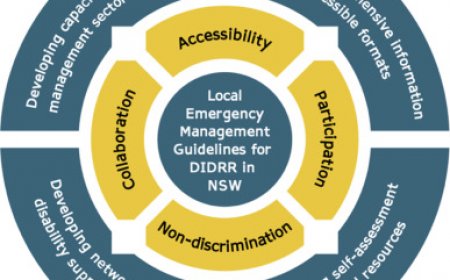Australia Accessibility in Tech: Whats Changing in 2025
Discover how Australia is transforming tech accessibility by 2025. Explore key trends, innovations, and regulations driving inclusivity in digital spaces.
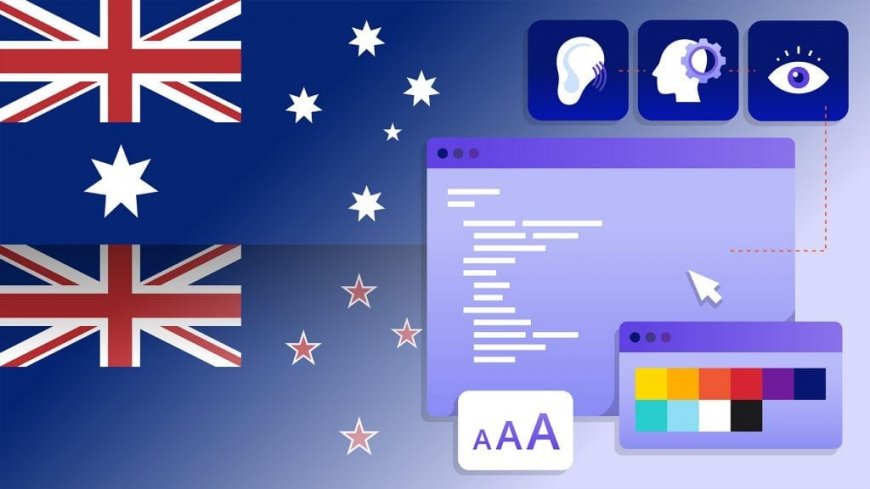
In recent years, the conversation around accessibility in technology has gained significant momentum in Australia. As we approach 2025, it is becoming increasingly clear that accessibility is no longer just a moral obligation but a critical business imperative. The tech industry is evolving rapidly to meet the needs of all users, including those with disabilities. This article explores the transformative changes happening in Australia's tech landscape, focusing on inclusive design , regulatory frameworks, and emerging innovations that are shaping the future of accessibility.
The Growing Importance of Accessibility in Australian Tech
Accessibility in technology refers to designing products, devices, services, or environments that can be used by people with a wide range of abilities. In Australia, this concept is gaining traction due to several factors, including an aging population, increased awareness of disability rights, and advancements in assistive technologies.
Why Accessibility Matters
For businesses, prioritizing accessibility is not just about compliance; it’s about expanding their user base. According to the Australian Bureau of Statistics (ABS), approximately 18% of Australians live with some form of disability . Ignoring this demographic means missing out on a significant portion of potential customers. Moreover, accessible design often leads to better usability for everyone, creating a win-win situation.
"Designing for accessibility is like building a ramp for a wheelchair user—it benefits not only them but also parents with strollers, delivery workers, and anyone else who might need easier access."
Key Drivers of Change
Several factors are driving the push for accessibility in Australian tech:
- Legislation: The Disability Discrimination Act (DDA) mandates that digital platforms must be accessible to all users.
- Consumer Demand: Users are increasingly demanding inclusive experiences, pushing companies to adapt.
- Technological Advancements: Innovations such as AI, voice recognition, and haptic feedback are making it easier to create accessible solutions.
Impact on Businesses
Businesses that fail to prioritize accessibility risk alienating a large segment of their audience. For instance, a visually impaired customer unable to navigate a poorly designed e-commerce website may choose a competitor offering a more accessible platform. On the other hand, companies that invest in accessibility often see improved customer loyalty, enhanced brand reputation, and even financial gains.
Broader Societal Benefits
Beyond business advantages, accessible technology fosters inclusivity and equality. It empowers individuals with disabilities to participate fully in society, whether it’s accessing education, employment opportunities, or social interactions. This aligns with Australia’s broader goals of reducing inequality and promoting diversity.
Regulatory Frameworks Shaping Accessibility in 2025
Australia’s commitment to accessibility is reflected in its robust regulatory framework. By 2025, these regulations will play a pivotal role in ensuring that tech companies prioritize inclusivity.
Disability Discrimination Act (DDA)
The DDA prohibits discrimination against individuals with disabilities in various areas, including employment, education, and access to goods and services. While the act doesn’t explicitly mention digital accessibility, courts have interpreted it to include websites and apps. This has led to a surge in lawsuits against non-compliant organizations.
Legal Precedents
Several high-profile cases have set important precedents. For example, a major Australian retailer was sued for failing to make its website navigable for screen readers. Such cases underscore the importance of adhering to accessibility guidelines to avoid legal repercussions.
Web Content Accessibility Guidelines (WCAG)
The WCAG serves as the global standard for web accessibility. In Australia, adherence to WCAG 2.1 Level AA is considered best practice. By 2025, many organizations are expected to adopt even stricter standards, such as WCAG 2.2 , which addresses cognitive disabilities and mobile accessibility.
Implementation Challenges
While the WCAG provides clear guidelines, implementing them can be challenging, especially for legacy systems. Many organizations struggle with retrofitting older platforms to meet modern accessibility standards. However, the long-term benefits far outweigh the initial investment.
National Disability Strategy
The Australian government’s National Disability Strategy outlines a comprehensive plan to improve accessibility across all sectors. Key initiatives include funding for assistive technologies, training programs for developers, and public awareness campaigns.
Government-Led Initiatives
One notable initiative is the Digital Transformation Agency’s (DTA) push for accessible government services. By ensuring that all federal websites comply with WCAG standards, the DTA aims to set an example for private-sector organizations.
Emerging Technologies Transforming Accessibility
As we move closer to 2025, several cutting-edge technologies are set to revolutionize accessibility in Australia. These innovations are not only enhancing the lives of people with disabilities but also paving the way for a more inclusive society.
Artificial Intelligence (AI)
AI-powered tools are making significant strides in improving accessibility. For instance:
- Speech-to-text applications enable real-time transcription for individuals with hearing impairments.
- Image recognition software helps visually impaired users navigate digital content.
- Predictive text algorithms assist users with motor disabilities in typing efficiently.
Real-World Applications
AI-driven accessibility tools are already being integrated into everyday products. For example, Google’s Live Caption feature automatically generates captions for videos and audio clips, benefiting users with hearing impairments.
Voice Assistants
Voice assistants like Siri, Google Assistant, and Alexa are becoming indispensable for people with mobility or visual impairments. These tools allow users to perform tasks hands-free, from sending messages to controlling smart home devices.
Customization Options
Modern voice assistants offer extensive customization options, enabling users to tailor commands to their specific needs. This flexibility makes them invaluable for individuals with diverse abilities.
Augmented Reality (AR) and Virtual Reality (VR)
AR and VR technologies are being used to create immersive learning experiences for students with disabilities. For example, virtual simulations can help autistic children practice social interactions in a safe environment.
Training and Rehabilitation
These technologies are also being employed in rehabilitation programs. For instance, VR-based physical therapy exercises can motivate patients recovering from injuries by gamifying the process.
Haptic Feedback Devices
Haptic feedback devices provide tactile sensations, enabling users to interact with digital interfaces through touch. This technology is particularly beneficial for individuals with visual impairments.
Integration with Wearables
Wearable devices equipped with haptic feedback, such as smartwatches, are becoming increasingly popular. They allow users to receive notifications and alerts without relying on visual cues.
Case Studies: Leading the Way in Accessibility
Several Australian companies and organizations are setting benchmarks in accessibility. Let’s take a closer look at some inspiring examples.
Case Study 1: Commonwealth Bank of Australia (CBA)
The CBA has made significant investments in accessibility, ensuring that its mobile banking app complies with WCAG standards. Features like screen reader compatibility, adjustable font sizes, and voice commands have made banking more accessible for all customers.
Customer Feedback
Users have praised the CBA app for its intuitive design and ease of use. One visually impaired customer noted, “I can now manage my finances independently, thanks to the app’s accessibility features.”
Case Study 2: Transport for NSW
Transport for NSW has implemented audio announcements and tactile indicators at train stations to assist visually impaired commuters. Additionally, their mobile app provides real-time updates in multiple formats, catering to diverse user needs.
Impact on Daily Life
These initiatives have significantly improved the commuting experience for disabled individuals, making public transport more accessible and reliable.
Case Study 3: Microsoft Australia
Microsoft has been a pioneer in promoting accessibility. Its suite of tools, including Microsoft Office and Teams, offers built-in accessibility features such as dictation, immersive readers, and high-contrast modes.
Global Influence
Microsoft’s efforts extend beyond Australia, influencing global accessibility standards. Their commitment to inclusivity has earned them widespread acclaim.
Challenges and Opportunities Ahead
While progress has been remarkable, there are still challenges that need to be addressed to achieve universal accessibility in Australian tech.
Common Challenges
- Cost Barriers: Implementing accessibility features can be expensive, especially for small businesses.
- Lack of Awareness: Many organizations remain unaware of accessibility guidelines and best practices.
- Technical Limitations: Some legacy systems are difficult to retrofit for accessibility.
Overcoming Obstacles
To overcome these challenges, collaboration between governments, businesses, and advocacy groups is essential. Funding programs, educational initiatives, and technological innovations can help bridge the gap.
Opportunities for Growth
Despite these challenges, the opportunities far outweigh the obstacles. Companies that embrace accessibility stand to gain:
- Increased Market Share: Accessible products attract a broader audience.
- Enhanced Brand Reputation: Demonstrating a commitment to inclusivity boosts customer loyalty.
- Improved User Experience: Accessible design often results in better usability for all users.
Future Prospects
As awareness grows and technology advances, the barriers to accessibility will continue to diminish. This presents a unique opportunity for businesses to lead the charge in creating a more inclusive digital world.
Tips for Building Accessible Tech Solutions
To stay ahead of the curve, here are some actionable tips for developers and businesses:
- Conduct regular audits to ensure compliance with WCAG standards.
- Involve people with disabilities in the design and testing process.
- Use semantic HTML to structure content logically.
- Provide alternative text for images and multimedia elements.
- Ensure sufficient color contrast for readability.
- Test your product on various devices and assistive technologies.
Best Practices
Adopting these practices not only ensures compliance but also enhances the overall quality of your product. For example, using descriptive alt text for images improves SEO while making content accessible to visually impaired users.
Comparison Table: Accessibility Tools and Platforms
Choosing the Right Tool
Selecting the appropriate tool depends on your specific needs. For instance, WAVE is ideal for quick evaluations, while JAWS offers comprehensive support for visually impaired users.
Review: Verdict on Australia’s Accessibility Journey
Australia’s journey toward tech accessibility is commendable, yet there is room for improvement. By leveraging emerging technologies, adhering to regulatory frameworks, and fostering a culture of inclusivity, the country is well-positioned to become a global leader in accessibility by 2025.
Areas for Improvement
While significant progress has been made, ongoing efforts are needed to address remaining gaps, such as rural accessibility and affordability of assistive technologies.
Conclusion
As we look toward 2025, it’s evident that accessibility in Australian tech is undergoing a paradigm shift. From legislative reforms to groundbreaking innovations, the stage is set for a more inclusive digital future. Businesses that prioritize accessibility will not only comply with regulations but also unlock new opportunities and foster goodwill among consumers.
Call to Action
Now is the time for organizations to embrace accessibility as a core value. By doing so, they can contribute to a more equitable society while reaping the rewards of a loyal and diverse customer base.
Frequently Asked Questions (FAQs)
1. What is accessibility in tech?
Accessibility in tech refers to designing products and services that can be used by people with disabilities.
2. Why is accessibility important in Australia?
Approximately 18% of Australians live with disabilities, making accessibility crucial for inclusivity.
3. What are the WCAG standards?
WCAG stands for Web Content Accessibility Guidelines, which provide criteria for making web content accessible.
4. How does AI improve accessibility?
AI enables features like speech-to-text, image recognition, and predictive text, enhancing usability for disabled users.
5. Are there penalties for non-compliance with accessibility laws?
Yes, non-compliance can result in legal action under the Disability Discrimination Act.
6. What is haptic feedback?
Haptic feedback involves using vibrations or motions to convey information through touch.
7. How can businesses test for accessibility?
Businesses can use tools like WAVE or involve users with disabilities in testing.
8. What role do governments play in accessibility?
Governments enforce regulations and fund initiatives to promote accessibility.
9. Can accessibility benefit non-disabled users?
Yes, accessible design often improves usability for everyone.
10. What trends will shape accessibility in 2025?
Emerging trends include AI, AR/VR, and stricter regulatory standards.
What's Your Reaction?
 Like
0
Like
0
 Dislike
0
Dislike
0
 Love
0
Love
0
 Funny
0
Funny
0
 Angry
0
Angry
0
 Sad
0
Sad
0
 Wow
0
Wow
0



